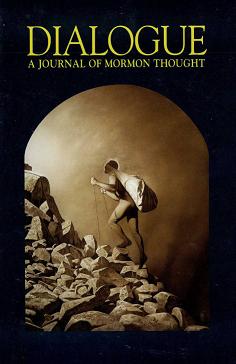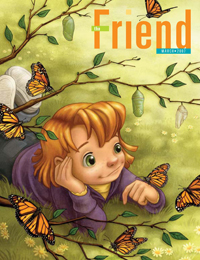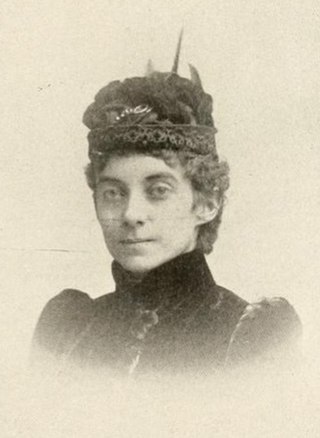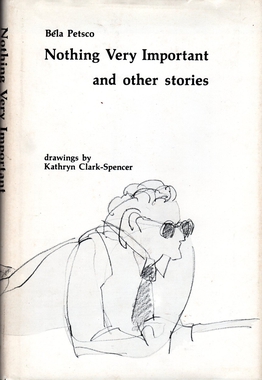Mormon fiction is generally fiction by or about members of the Church of Jesus Christ of Latter-day Saints, who are also referred to as Latter-day Saints or Mormons. Its history is commonly divided into four sections as first organized by Eugene England: foundations, home literature, the "lost" generation, and faithful realism. During the first fifty years of the church's existence, 1830–1880, fiction was not popular, though Parley P. Pratt wrote a fictional Dialogue between Joseph Smith and the Devil. With the emergence of the novel and short stories as popular reading material, Orson F. Whitney called on fellow members to write inspirational stories. During this "home literature" movement, church-published magazines published many didactic stories and Nephi Anderson wrote the novel Added Upon. The generation of writers after the home literature movement produced fiction that was recognized nationally but was seen as rebelling against home literature's outward moralization. Vardis Fisher's Children of God and Maurine Whipple's The Giant Joshua were prominent novels from this time period. In the 1970s and 1980s, authors started writing realistic fiction as faithful members of the LDS Church. Acclaimed examples include Levi S. Peterson's The Backslider and Linda Sillitoe's Sideways to the Sun. Home literature experienced a resurgence in popularity in the 1980s and 1990s when church-owned Deseret Book started to publish more fiction, including Gerald Lund's historical fiction series The Work and the Glory and Jack Weyland's novels.

Dialogue: A Journal of Mormon Thought is an independent quarterly journal that addresses a wide range of issues on Mormonism and the Latter Day Saint Movement.

The Friend, formerly titled The Children's Friend, is a monthly children's magazine published by the Church of Jesus Christ of Latter-day Saints. It is aimed at those of Primary age, approximately ages 3 through 12. It includes messages from church leaders, stories, crafts, recipes, and artwork and poetry submitted by readers.
Dean Hughes is an American author of historical novels and children's books. He has written 105 books as well as various poems and short stories. As a member of the Church of Jesus Christ of Latter-day Saints, Hughes is a prominent author of LDS fiction for children and juveniles. Many of Hughes's books are sports or war themed. Hughes is most well known for his historical World War II era Children of the Promise series for adults. His novel Midway to Heaven was adapted into a feature-length film in 2011. Before he became a full-time author, Hughes taught English at Central Missouri State University. He taught creative writing at Brigham Young University.
The Whitney Awards are awards given annually for novels by LDS authors. Established in 2007, they are named after Orson F. Whitney, a prominent early member of the LDS Church. There are several categories for which novels may be nominated. The Whitney Awards are a semi-independent non-profit organization affiliated with the LDStorymakers, a guild for LDS authors.
Douglas H. Thayer was a prominent author in the "faithful realism" movement of Mormon fiction. He has been called the "Mormon Hemingway" for his straightforward style and powerful prose. Eugene England called him the "father of contemporary Mormon fiction."

George Eugene England, Jr., usually credited as Eugene England, was a Latter-day Saint writer, teacher, and scholar. He founded Dialogue: A Journal of Mormon Thought, the oldest independent journal in Mormon Studies, with G. Wesley Johnson, Paul G. Salisbury, Joseph H. Jeppson, and Frances Menlove in 1966, and cofounded the Association for Mormon Letters in 1976. He is also widely known in the Church of Jesus Christ of Latter-day Saints for his many essays about Mormon culture and thought. From 1977–1998, England taught Mormon Literature at Brigham Young University. England described the ideal modern Mormon scholar as "critical and innovative as his gifts from God require but conscious of and loyal to his own unique heritage and nurturing community and thus able to exercise those gifts without harm to others or himself."
Boyd Jay Petersen is program coordinator for Mormon Studies at Utah Valley University (UVU) and teaches English and literature at UVU and Brigham Young University (BYU). He has also been a biographer of Hugh Nibley, a candidate for the Utah House of Representatives, and president of the Association for Mormon Letters. He was named editor of Dialogue: A Journal of Mormon Thought for the term 2016-2020.
The Association for Mormon Letters (AML) is a nonprofit organization founded in 1976 to "foster scholarly and creative work in Mormon letters and to promote fellowship among scholars and writers of Mormon literature." Other stated purposes have included promoting the "production and study of Mormon literature" and the encouragement of quality writing "by, for, and about Mormons." The broadness of this definition of LDS literature has led the AML to focus on a wide variety of work that has sometimes been neglected in the Mormon community. It publishes criticism on such writing, hosts an annual conference, and offers awards to works of fiction, poetry, essay, criticism, drama, film, and other genres. It published the literary journal Irreantum from 1999 to 2013 and currently publishes an online-only version of the journal, which began in 2018. The AML's blog, Dawning of a Brighter Day, launched in 2009. As of 2012, the association also promotes LDS literature through the use of social media. The AML has been described as an "influential proponent of Mormon literary fiction."
The AML Awards are given annually by the Association for Mormon Letters (AML) to the best work "by, for, and about Mormons." They are juried awards, chosen by a panel of judges. Citations for many of the awards can be found on the AML website.

Josephine Spencer was an American writer, journalist, and political activist from Utah. She was an important figure in the Mormon home literature movement of the late 19th century who published more than one hundred poems, fifty short stories, and five serialized novels.
Maureen Ursenbach Beecher is a historian and editor of the history of the Church of Jesus Christ of Latter-day Saints. She studied at Brigham Young University (BYU) and the University of Utah. She worked in the History Department for the LDS Church from 1972 to 1980, and became a professor of English at BYU in 1981 while continuing her work in Mormon history at the Joseph Fielding Smith Institute for Church History. She published a popular book of Eliza R. Snow's writings.

Steven L. Peck is an American evolutionary biologist, poet, and novelist. His literary work is influential in Mormon literature circles. He is a professor of biology at Brigham Young University (BYU). He grew up in Moab, Utah and lives in Pleasant Grove, Utah.
Jack Aaron Harrell is an American fiction writer, essayist, and English professor at Brigham Young University–Idaho.

Melissa Leilani Larson is an American writer and playwright based in Salt Lake City, Utah. Mormon literature critic Michael Austin described her as "one of the true rising stars of Mormon literature." Producer Jeremy Long described her as the "best playwright in Utah." Her plays commonly feature women in leading roles, and some center around the faith of members of the Church of Jesus Christ of Latter-day Saints.

James Goldberg is an American historian, playwright, poet, and writer. He has Jewish, European, and Punjabi ancestors, and his grandfather, Gurcharan Singh Gill, was the first Sikh to join the Church of Jesus Christ of Latter-day Saints. He attended Otterbein University briefly before transferring to Brigham Young University (BYU), where he completed his undergraduate work and earned a Master of Fine Arts degree. He was an adjunct professor at BYU.
Phyllis Barber is a writer of fiction and non-fiction, often set in the Western United States. She was raised in Boulder City, Nevada and Las Vegas as a member of the Church of Jesus Christ of Latter-day Saints. She studied piano at Brigham Young University and moved to Palo Alto, California where her husband studied law at Stanford. There Barber finished her degree in piano at San Jose State College in 1967, and taught and performed piano in California. She studied creative writing at the University of Utah and received an MFA in writing from Vermont College in 1984. She started her writing career by publishing short stories in journals and magazines in the 1980s.
This is a list of literary works by Steven L. Peck. His academic publications are not included, but can be found on his curriculum vitae.

Nothing Very Important and Other Stories is a collection of interconnected short stories written by Béla Petsco and self-published in 1979 with illustrations by his friend Kathryn Clark-Spencer. The stories are about missionaries from the Church of Jesus Christ of Latter-day Saints working in Southern California. Signature Books reprinted the book in 1984 under their Orion imprint. Petsco wrote the stories for his master's thesis at Brigham Young University (BYU). The book won the 1979 Association for Mormon Letters award for short fiction. The stories were adapted for theater and performed in 1983, but without BYU's endorsement.

Michael Austin is an American academic, university administrator, author, and critic, specialising in the study of Mormon literature. In 2022, he was given the Lifetime Achievement Award from the Association for Mormon Letters. He is the provost and vice president for academic affairs at Snow College.









